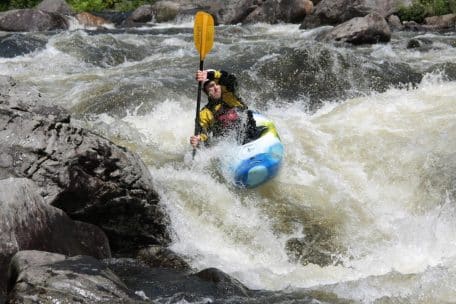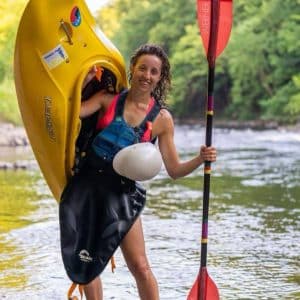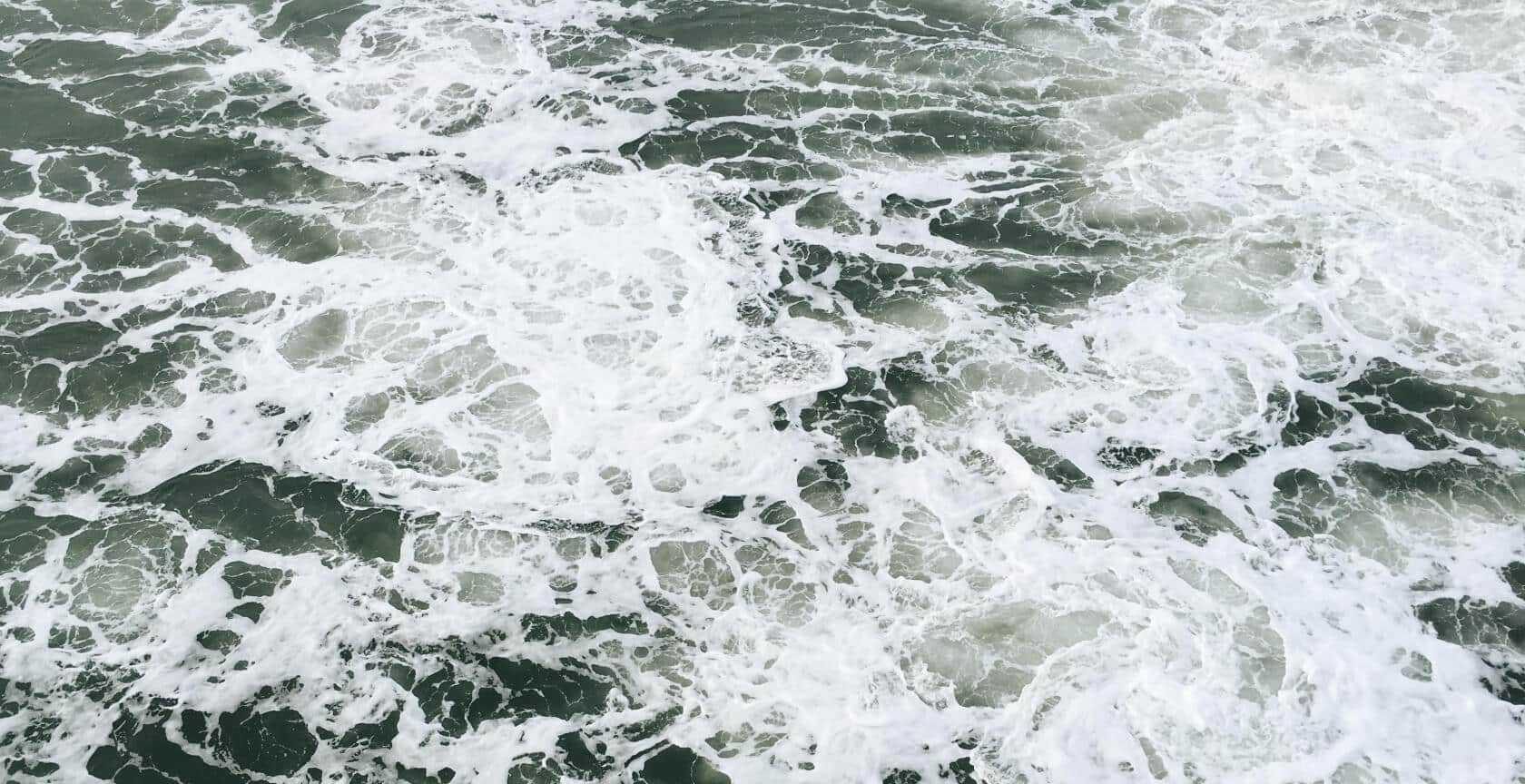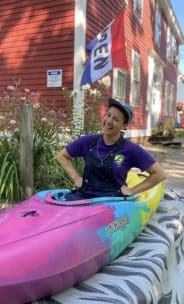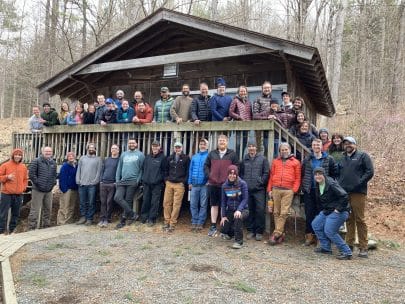When you really boil it down, kayaking is all about connections. They may come in big picture form as well as technical skills. Connections between you and the forces of nature. You and your stoke for the sport. You and your paddling buddy. You and the present moment. Your connection between your body and your boat. You and your paddle. Your paddle to the water. Connections are everywhere in whitewater kayaking.
For this week’s edition of Current Connections, we are diving into the connection between a paddlers body and the paddle. The connection between the paddler and the paddle is one of the first things people notice in their whitewater kayaking career. The paddle is the paddler’s tool to navigate the river environment gracefully and effectively.
What is the Paddler’s Box
The foundation of this Paddler-Paddle connection is the “Paddler’s Box.” In order to maintain a power position with your arms, try creating a rectangle between your arms, shoulders, and the paddle shaft. This rectangle is called the “Paddler’s Box.”
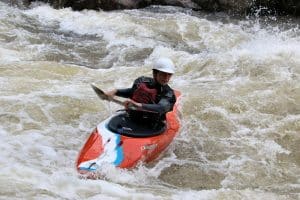
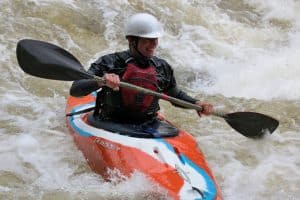
With a strong paddler’s box, you can maximize power in your strokes using torso rotation that allows the body to move with the paddle. You are also putting yourself in a positive shoulder position with a strong Paddler’s Box that should decrease your risk of shoulder injury.
There are all sorts of paddle options to investigate—straight and bent shafts, differing materials, off-sets, and feathers, and even where you place your hands for the optimum control. These variables are great to explore as you dive deeper into the paddlesports and your connection with your paddle as a tool to navigate our beloved river waters.
What type of paddle is your favorite? What questions do you have about the paddler – paddle connection?
